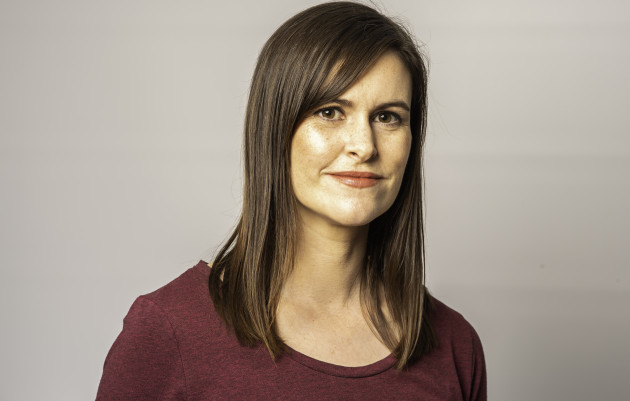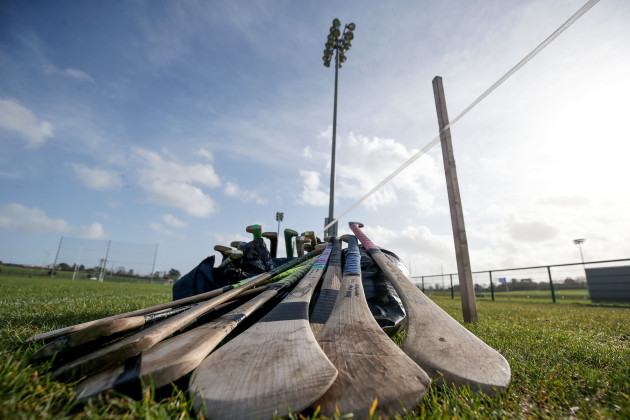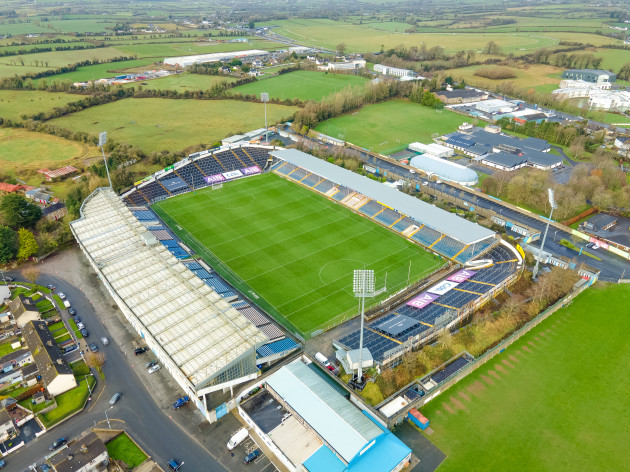I DON’T CARE who you are, there’s only so much superstar GAA figure autobiographies anyone can wade through before they become jaded with the format.
The wins. The All-Stars. The hard training sessions and puddles of puke. The sickening losses and the three-day binge of gallons of porter. Going back to the club, where it all began and where it will all end. Giving back. Thanks to the community, friends, family.
Season with a controversial incident when they didn’t carry themselves well, on or off the pitch, and hey presto! You have the latest confessional and ‘brave’ account of your life to date, all lovingly packaged and presented for the Christmas market.
The GAA has always been too interesting for stories only to be told by those who thrilled the tens of thousands. Thankfully, there has been an organic literary movement in recent times where professional writers have begun telling their stories rooted in local communities. That includes all the petty resentments that GAA clubs seem strapped into, along with the wide-open beautiful stuff that sweetens the journey.
The latest offering, The Grass Ceiling by Eimear Ryan, takes its place among the very best books on the topic. A camogie player from Moneygall, Co Tipperary, she sees herself perhaps more keenly as a ‘hurler’, and that’s a great way into this book.
Ryan has long been respected for her writing. A winner of the Hennessey Award in 2009, she has an acclaimed novel, Holding Her Breath, published in 2021. She is a founder of Banshee Press and has a regular, thought-provoking column with the Irish Examiner.
All of this feeds into a new wave of talent focussing on the personal, such as Dave Hannigan’s Boy Wonder and Tadgh Coakley’s The Game.
“We all had our idols and heroes, we read about our favourite players. That’s what most people’s experience is of the GAA and that’s at the very high elite levels,” Ryan explains.
“I think as well that winners have a different mindset. That it is a world apart from the ordinary club players, I think.
“It’s really great to see that perspective being given more space. One of my favourite sports books is Christy O’Connor’s ‘The Club’ and that came out in 2010 or thereabouts. And that was a long way ahead of the curve. It captured that local club experience in a way that hadn’t been done before and it was a great inspiration for me.”
In terms of GAA background, she is steeped in it. She writes movingly about the times she might have spotted her grandfather at her games, taking his usual place by a low wall. Seamus Ryan was the President of the GAA from 1967 to 1970. She is a cousin of the former Dublin footballer, Shane. That kind of lineage leaves an impression that she does not shy away from.
“I definitely felt there was a mantle being handed down in some way. There was this incredibly proud family tradition that you had to keep in mind and you had to respect and uphold,” she says.
“It was never verbalised that it was expected of me. But it was something I was aware of being in this big, sprawling GAA family, where so many of us played.
“There was no pressure put on me, but in any family, you get a sense of what we value and what is important and from day one it was hurling and the GAA.
“I was very proud of my granddad, my father and my uncles and I was always glad when he came to see me play as it felt the experience was heightened in a way. ‘Grandad is watching, so I better play well.’”
Work on the book itself started in 2016. Initially, she felt a reluctance to write about GAA because of the Pandora’s Box she would be opening.
“Everything was going to be on the table because the GAA winds itself around every aspect of your life. You can’t really separate it out, you have to talk about all aspects of life,” Ryan explains.
“But back in 2016, Kevin and Olivia at Winter Papers, they were looking for an essay on winning in the GAA. They felt that it was something they read too much about or seen too much about.”
That became the essay, The Fear of Winning, later to be developed into a short film called The Grass Ceiling also.
“I was kind of petrified because it was the most personal thing I had ever written. But I also got one of the warmest responses of anything I had ever written as well when it eventually came out.”
Such was the reaction, her editor got in touch and asked if the idea could be developed into a book. She juggled her novel with this book, and eventually it came together in fits and starts.
“One of the most nerve-wracking personal processes was at the end when I had most of the material gathered and ready. I was showing it to my parents,” she recalls.
“I had made my peace and reviewed parts of myself a lot. But you cannot talk about yourself without pulling in your family and friends, especially since the nature of the book, my team mates and mentors were going to be characters on the page essentially.”
The most nerve-wracking feeling she had was when she isolated various passages and emailed them on to different people who were part of her story. Some of them might not have been painted in an entirely flattering manner, but to their credit, “They were all amazing about it. They were all generous and kind and just said, ‘yes, really appreciate the honesty, fine by me.’”
The themes touched on included the usual injury history and frustration that brings. But there are previously unexplored moments about not quite being good enough to make yourself a fixture on a county panel, in her case the Tipperary camogie one, and her regret that she didn’t wring every last drop out of it.
It wasn’t until her final years playing with St Finbarr’s in Cork that she became truly comfortable in her abilities. At the start of this year, she made the decision to stop playing. She remains haunted by the words of Donal Óg Cusack when he says that upon your retirement, you should be able to look back and know you got the very best out of yourself.
“I don’t know many people who feel that way. I definitely don’t feel I got the best out of myself,” she says.
“The days that you lost, the days you made mistakes, they stand out in your head a lot more than the days that you win. The days that you win are a happy blur in your memory, but the days you lost seem crystal clear and play back in my head in high-definition.”
And yet, she is a writer. Like any writer, there is a hunger to get out there into the world, away from the very thing that keeps you rooted into a tight-knit community of team, club, members.
When she was 20, she finished with the Tipp panel. It was hard to get her head around and she felt even at that age that she was washed up and so struck out to live in New York.
“But it actually did me good to get away. Because here, everybody knew me through this lens of camogie and where I was from and it was really nice to get out of that context. Just be known for who I was, rather than the kind of player I was.
“It was also a chance to explore other aspects of my identity, it’s when I started taking myself seriously as a writer then, when I went away to America and became immersed in that world of writing, editing, book shops and wanted to make that my career.”
There are also fascinating diversions into how she might see the most gauche teenagers on the Tipperary hurling panel would attract the attention of her peers in discos, but to be a camogie player felt like something to be almost hid from boys. She got over that.
One of the best lines in the book is how this self-confessed introvert could ‘make myself big’ on the field of play.
“I am quiet and shy, bookish and I prefer one on one chats compared the group craic, if that makes sense,” she says.
“I suppose playing a team sport, especially a really physical team sport, it is a different way of being. I talked about it in the book, it is the only place I have been praised for aggression.
“In everyday life, women are expected to be pretty and agreeable and quiet and nice and put others first. The pitch is a great opportunity to be commanding and make yourself big. Impede someone’s path, be aggressive and assertive in that physical way.
“And yet there is no other way of life that gives me that, so I will definitely miss it, for sure.”
What to replace it with? Hard to say. She enjoyed skateboarding but sustained a horrendous injury one day that halted her playing days. She also has massive reservations about gym culture; how fitness is ‘commodified’ and just another strand of sucking money out of females.
“There is that feeling of being in the gym of somehow being on display in some way. Because it is such a big, open space. Sometimes there is mirrors so you definitely feel you are exposed in the gym,” she explains.
“Even though everyone else might have their headphones in and are doing their own thing, so it might be just that perception that I have.
“Jia Tolentino has an amazing essay about this. She is a New Yorker writer who has this amazing essay about ‘Athleisure’ and the commodification of exercise as just another way to sell stuff to women.”
“Whether it is the make-up that doesn’t come off when you sweat, the cool sports bras and cool leggings. And some of it is crazy expensive. You are literally going into a room to break a sweat and feel good about yourself, but yet there is all of this nonsense that you have to push through before you get there.
“One of the things I loved about camogie is that you have a helmet on. You are obscured. Your looks don’t matter at all but the way you express your body is important.
“Your body could be appreciated for its abilities, but not objectified.”
In stepping in and out of the two worlds of literature and GAA, she agrees that there is a trend nowadays to include GAA as a focal point of many people’s lives in new literature. While James Joyce may have left a few cryptic clues in Ulysses about ‘The Citizen’ character being Michael Cusack, GAA references are bare enough. Of all the recognised greats, only Patrick Kavanagh with his background as a goalkeeper for Inniskeen embraced it, once remarking, “No man can adequately describe Irish life who ignores the Gaelic Athletic Association, which is true in a way, for football runs women a hard race as a topic for conversation.”
“It’s definitely coming into modern literature more and more,” Ryan points out. “There is a book coming out in August by Noel O’Regan, called ‘Though The Bodies Fall.’ It’s set on a peninsula in Kerry and there are a lot of references to Kerry hurling throughout, which I thought great, because it’s set in one of the pockets where there would be hurling.
“I think people are bringing it in and recognising that it is such a big part of Irish life that it is almost unrealistic to write a novel of contemporary Ireland and not have it somewhere.”
The great gift of the GAA is how, eventually, it all comes full circle. This book opens with a vivid prologue. The Ryan family are sitting in a stand on a summer’s day. A Dairy Milk bar has been broken open and there is a tension around how eight squares of chocolate are divvied up between five people. Eimear is sitting studying the programme, through the John Leahys and Declan Ryans when her eyes fixate on one position.
- “Who’s AN Other, Dad?”
Seamus Ryan Jnr had been a wing-forward on the Moneygall team that won back-to-back Tipperary county titles in the mid-70s and had the potential to be antsy at matches, but being a teacher he would patiently explain it all. When they won those hurling titles, he and his own father once hugged it out in Semple Stadium. It was the only time they did such a thing, in a different time, a different world.
This Sunday, she will be sitting beside him, in Semple Stadium. They might stretch to a Dairy Milk each now in this time of plenty as they follow the progress of the Tipperary hurlers against Limerick.
“There’s a few amazing fixtures coming up now in Thurles. Those kind of tendrils of hope are starting to come in now,” she says.
“We have been doing alright. I don’t see us beating Limerick but I would be hopeful of us winning one of our two remaining fixtures. God knows how Munster is going to shape out. But it’s always a bit chaotic. It’s so good to see them bounce back from last year.
“For the last match in Pairc Ui Chaoimh, I was next to my partner and step son and the two of them were roaring for Cork while I was roaring for Tipp.
“But in Thurles now, I will go with my brother and my dad, I think, into Semple Stadium. It will be family anyway.”
Family, hurling, camogie, feelings, yarns, perspectives, thoughts and heart and soul and love for place, sport and, again, family.





